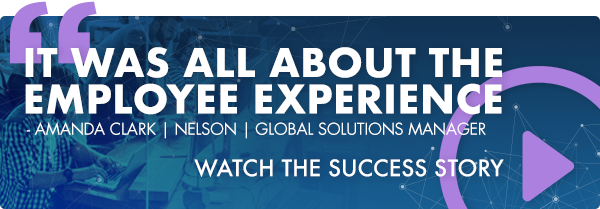How To Build An Engaging Workplace Experience


In the modern office, work isn’t just what employees do; it’s also what they experience. And in the fight to attract and retain top talent, that experience has become so important that many organizations are hiring dedicated workplace experience managers.
Here’s what you need to know about the workplace experience and three things you can do to make yours exceptional.
Elements of the Workplace Experience
In the broadest sense, the workplace experience is composed of the physical workplace, the environment the employer creates and every work-related interaction or feeling an employee has — regardless of whether it takes place on site or remotely. More specifically, the workplace experience can be broken down into the following elements:
The Workplace Design
It goes without saying that the core of the workplace experience is the workplace itself. It is the physical and virtual environment, including the layout, decor, furniture, assets, equipment and technologies.
Employee Needs
Each individual’s role in the company will affect the physical settings, services and technologies they need. For example, senior-level employees and managers will spend more time in meetings than entry-level associates, which means the availability of conference rooms will have a bigger influence on their perception of the workplace.
Employee Preferences
Every employee has their own unique work preferences. Some need silence and privacy to be productive; others work better in a more dynamic, social environment. Still others need a mix of the two depending on the project. An employee’s preferences have a major impact on their workplace experience. Does your workplace have the right mix of meeting rooms and space to accommodate everyone?
Workforce Behavior
The ways in which employees interact with the workplace will affect how they feel about it. If their workplace technology is easy to use and makes their jobs easier, they will likely have more positive feelings about the job on a daily basis.
For instance, they’ll be more likely to collaborate with colleagues if they can reserve a room at a moment’s notice. On the other hand, if the technology is outdated and frustrating to use, those frustrations will boil over and impact their behavior. They’ll be less patient with their coworkers and less likely to follow general rules of etiquette. They may also be less receptive to their coworkers’ ideas.
Change Management
An employer’s approach to change management can have as big of an impact on the workplace experience as the change itself. Involving employees in the process from the beginning will lead to a much different outcome than simply making the change and then selling employees on the update after the fact.
Enhancing the Workplace Experience in 3 Steps
1. Design the Workplace with Experience and Strategy in Mind
The first step to improving the workplace experience is to take a holistic approach to office design. Combine the emotional aspects of the workplace (such as spontaneous conversations and impromptu meetings) with the more objective elements —operations, business strategy and data insights — and use these to inform your decisions.
Our partners at Sodexo explain it this way: “Experience design asks leaders to build agile and adaptive strategies that can be tweaked and tested over time, blending data and analytics with user-centered approaches to simplify lives. A dynamic workplace design requires specific ways of thinking framed by needs that work for your individuals, teams and company.”
Taking this approach creates an environment where your workforce has what it needs to maximize their output and innovation.
2. Increase Employee Engagement
You can’t expect employees to be satisfied and engaged if your workplace doesn’t promote employee engagement and productivity. Your workplace must, above all else, support your workforce’s ability to get work done. This means designing an environment that is enjoyable to work in, enables the workforce to easily share information and knowledge and one that empowers employees with the tools and technologies they need to be as productive as possible.
Ensure noise levels are well-controlled by making deliberate decisions about where collaborative spaces are placed in relation to quiet areas. Consider what kinds of feelings and emotions different furniture and decor evoke. Make it easy for employees to locate and connect with their colleagues with mobile apps. Provide a variety of workspaces for different tasks, as well as formal and informal meeting areas and an easy way to reserve these spaces.
3. Create Opportunities for Emotional Connections
As the agile workforce continues to expand and remote work is more common, there are fewer opportunities for employers to support emotional connections in the workplace. Yet these connections are more important than ever.
One of the best ways to build emotional connections is to ensure every employee feels they are valued by their team and by the company as a whole. This includes having regular one-on-ones with supervisors every week or every other week instead of quarterly or annually. It also means recognizing achievements at company meetings. Most importantly, building emotional connections requires providing the same quality workplace experience to both on-site and remote employees.
Adopting an integrated approach to workplace management is the key to attracting top talent, retaining a productive workforce and growing your business. Make sure you prioritize your efforts to upgrade the workplace experience in 2020.
